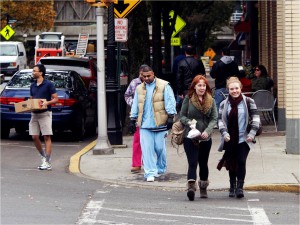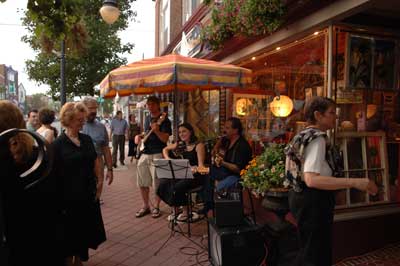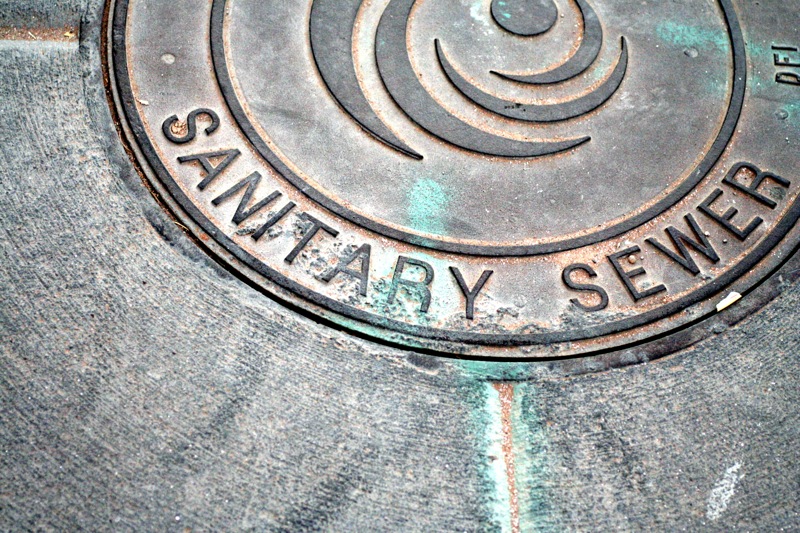New Jersey Future Blog
New Jersey’s Inner Suburbs: Leading Indicator of Opportunity and Challenge
July 24th, 2013 by Elaine Clisham
On a warm Saturday morning in June a range of residents, religious leaders and local officials from a group of municipalities in northern Middlesex and southern Union counties convened at the Avenel Middle School in Woodbridge to discuss the issues that are particularly affecting their inner-ring suburban communities. High on the list: the challenges presented by the increasing population diversity of the area; the need for economic-growth incentives to be available beyond the state’s largest cities; more equitable approaches to education funding; and the importance of upgrading the area’s aging infrastructure.
The meeting, convened by Building One New Jersey, a grassroots coalition of groups from throughout New Jersey devoted to the idea that everyone who lives here has a stake in the economic and social well-being of our region and of all the communities within it, and Together North Jersey, the regional planning initiative funded by a $5 million grant from the U.S. Dept. of Housing and Urban Development, is part of a first round of public workshops throughout the North Jersey region to identify things residents like about where they live, and things they would like to change. The information gathered at these meetings and at the two upcoming rounds of workshops will be used to inform the development of a Regional Plan for Sustainable Development, a document intended to inform municipal decision-making on issues of growth, economic development, equity and environmental preservation.
State and congressional legislators from the area spoke next, discussing the importance of several pending pieces of legislation, including the Economic Incentives Act, funding for brownfields remediation, spending on infrastructure, and school funding. More balance is needed in the Economic Opportunities Act, they said, to ensure that smaller communities, not just larger cities, have tools available to them to incentivize commercial investment and job growth. Also mentioned was the shortage of housing choices in the area, and particularly the lack of affordable family housing and the shortage of housing close to employment centers, as patterns that exacerbate economic segregation. These issues, they said, particularly affect the kinds of communities represented at the meeting, and attendees were encouraged to learn more about them and to work with their legislators to ensure that the final bills represent their diverse interests.
Keynote speaker David Rusk Rusk, a former federal Labor Department official, New Mexico legislator, and mayor of Albuquerque and now a consultant on urban policy, presented data highlighting the increasing ethnic and economic diversity in New Jersey and pointed out how the inner-ring suburbs comprise the leading edge of that trend. He presented some statistics to underscore the growth in economic inequality in the region. Specifically, he highlighted as challenges:
- The increase in the percentage of children eligible for free or reduced-price school meals in these areas compared with more suburban areas;
- The geographic congruence of locations with high minority populations, large numbers of public and multi-family housing units, large numbers of households in poverty, a smaller-than-average per-capita property tax base, and private-sector job losses, especially compared with job gains in more suburban locations.
Rusk brought all those factors together in what he referred to as the Municipal Opportunity Index, and showed that those areas with the lowest opportunity scores were almost exclusively the inner cities and inner-ring suburbs in the area. By contrast, the newer, less dense suburbs in the county had the highest Municipal Opportunity scores.
This inequity, he said, should form the basis of a policy agenda to promote diverse and inclusive communities by revitalizing New Jersey’s cities, stabilizing its inner suburbs, and encouraging greater diversity in the outer suburbs. The Regional Plan for Sustainable Development, he said, presents a clear opportunity to advance these goals.
He encouraged those involved with developing the regional plan to work to make housing diversification a priority for wealthier communities and infrastructure investment a priority for inner suburbs – all perhaps using something like a Municipal Opportunity Index as the basis for those strategies.
It was clear from the discussion that the inner-ring suburbs – increasingly diverse in both ethnicity and economic background – are both the key and a challenge to New Jersey’s overall economic health. They offer attractive proximity to transit and in many cases to employment, but, as speakers pointed out, they are sometimes overlooked in favor of larger urban areas. Finding ways to revitalize these assets will unlock a lot of economic potential for the entire state.

















